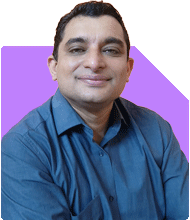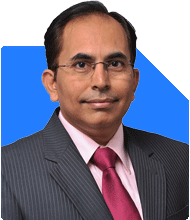Hello Sir, My Age is 31 From This Month, I started my SIP Details r as below 1). SBI Small Cap Fund Direct Growth 2K 2).Tata Small Cap Fund Direct Growth 2k 3).HDFC Health Care and Pharma Fund Direct Growth 2k 4). Motilal Oswal Midcap Fund Direct Growth 3L. Lumsum (One Time Investment) Above listed my investment is Good Or Required any Changes, kindly suggest I want to build my corpus 2 cr in another 15 year & how much I have to invest more to achieve Target. From- Gangadhar C.
Ans: It's great to see that you've started your investment journey, and your goal to build a corpus of Rs 2 crore in 15 years is ambitious and achievable with proper planning.
Let’s assess your current investments and provide suggestions for improvement.
Assessing Your Current Investment Portfolio
SBI Small Cap Fund Direct Growth (2K)
Small-cap funds have high growth potential but also higher risks.
While this could give good returns, it also comes with volatility.
Tata Small Cap Fund Direct Growth (2K)
Similarly, small-cap funds are for aggressive investors.
They may generate significant returns over time, but market downturns can affect performance.
HDFC Health Care and Pharma Fund Direct Growth (2K)
Sectoral funds are highly focused.
The health care and pharma sector can offer growth, but it’s risky to concentrate too much on one sector.
Motilal Oswal Midcap Fund Direct Growth (3 Lakhs)
Midcap funds offer a balanced risk-reward ratio compared to small-cap funds.
This investment provides stability compared to small-cap exposure.
While your investments show a good mix of growth-oriented funds, you need to balance risk with diversification. Too much exposure to small-cap funds and sectoral funds could lead to high volatility.
Concerns with Direct Mutual Funds
Direct mutual funds often appear cheaper because they don’t have distributor commissions. However, this isn’t always the best approach for long-term investors like you.
Disadvantages of Direct Funds:
Lack of guidance: You miss expert advice that could help adjust your portfolio as per market changes.
Emotional bias: During market volatility, people tend to make emotional decisions, leading to losses.
You might benefit more by investing through a Certified Financial Planner (CFP). A CFP with an MFD credential can help optimise your portfolio. Regular funds allow you to access their expertise while managing risks efficiently.
Investment Goal: Rs 2 Crore in 15 Years
To reach a goal of Rs 2 crore in 15 years, your investment strategy should align with both growth and safety. Let’s explore the key areas:
Growth Potential
Small-Cap and Mid-Cap Funds: These funds are good for long-term growth but need careful monitoring.
Actively Managed Diversified Funds: Actively managed funds with skilled managers can adapt better to market conditions than index funds. You should shift a portion of your investments into these to reduce the risk.
Portfolio Diversification
Your current portfolio lacks diversification. Too much exposure to small-cap and sectoral funds increases risk, especially during downturns.
Balanced Asset Allocation: Consider adding large-cap funds, flexi-cap funds, or balanced advantage funds. These funds provide more stability and reduce the overall risk of your portfolio.
Debt Mutual Funds: Having some allocation in debt funds could also be helpful to balance market volatility.
How Much More Do You Need to Invest?
While we won’t go into complex formulas, it’s important to realise that achieving Rs 2 crore in 15 years requires disciplined investing.
Given your current SIP and lump-sum investments, you might need to increase your SIP amount over time, especially with step-ups as your income grows.
Let’s assess this:
SIP Step-Up: By increasing your SIP contribution by 10% each year, you can make significant progress towards your target.
Lump Sum Investments: Keep making lump-sum investments whenever you have extra savings. Investing during market corrections can help boost long-term returns.
Tax Considerations
As your investments grow, be aware of the tax implications:
Equity Mutual Funds: Gains above Rs 1.25 lakh in a year are taxed at 12.5% under the new rules. Short-term gains are taxed at 20%.
Debt Mutual Funds: Taxed as per your income slab.
By optimising your tax liability, you can retain more of your earnings.
Importance of Regular Portfolio Review
One thing often overlooked is the importance of regular portfolio review.
Rebalancing: A Certified Financial Planner (CFP) can help you rebalance your portfolio based on market conditions.
Fund Performance: Actively managing your funds allows you to switch underperforming schemes to better ones.
Since market trends change, it's essential to review your portfolio every year. This ensures that your investments are aligned with your long-term goals.
Avoid Sectoral Over-Concentration
While sectoral funds, like your investment in the health care and pharma sector, can give high returns in specific market conditions, they can also be risky.
Instead, diversified equity funds spread across different sectors may offer better stability.
Benefits of Regular Funds via CFP
Here are some reasons to consider investing through regular funds with a Certified Financial Planner (CFP):
Professional Advice: A CFP can guide you in selecting the best funds, aligning with your long-term goals.
Behavioural Coaching: When markets fall, people often panic. A CFP can help you stay on course.
Portfolio Monitoring: Regular updates and rebalancing ensure your portfolio adapts to changing market conditions.
Direct funds may seem cheaper, but the expert advice that comes with regular funds can save you from emotional and impulsive decisions.
Emergency Fund and Risk Management
Don’t forget the importance of an emergency fund and adequate insurance.
Emergency Fund: Set aside at least 6 months of your monthly expenses in a liquid fund or fixed deposit.
Insurance: Ensure you have sufficient term insurance and a family medical policy to protect your loved ones.
These measures protect your family from unforeseen events, while your investments grow over time.
Final Insights
Sir, your current investments are a good start, but some changes can help you reach your goal of Rs 2 crore.
Diversify: Reduce your exposure to small-cap and sectoral funds. Add more large-cap and flexi-cap funds.
Regular Contributions: Increase your SIP amount annually and keep adding lump-sum investments whenever possible.
Seek Professional Guidance: A Certified Financial Planner (CFP) can help you optimise your portfolio for better growth while managing risk.
Tax Planning: Be aware of capital gains taxation and plan accordingly.
By following a disciplined strategy and monitoring your portfolio, you can confidently work towards your financial goals.
Best Regards,
K. Ramalingam, MBA, CFP,
Chief Financial Planner,
www.holisticinvestment.in
https://www.youtube.com/@HolisticInvestment





























